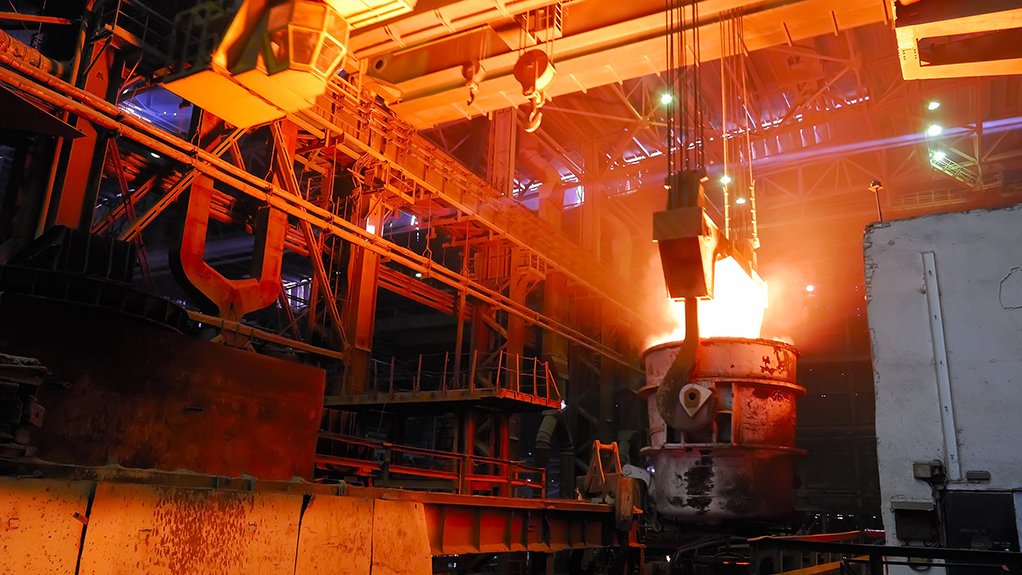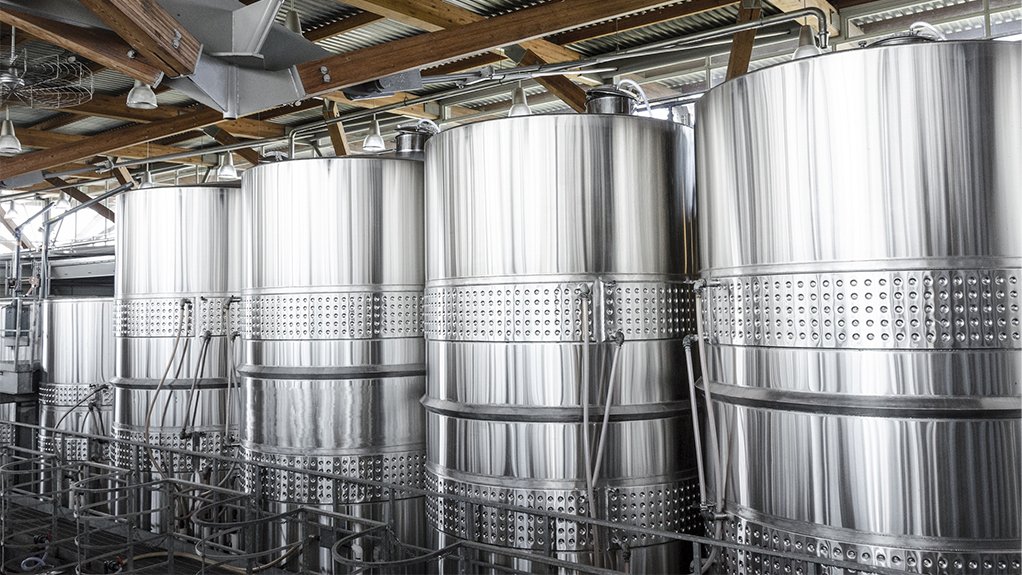Expedited change in stainless steel industry expected



ADDED STRESS The national lockdown has compounded the challenges faced by the already stressed stainless steel industry
ADVANCING ACTION The Steel Master Plan aims to prevent capacity and job losses and move the stainless steel industry towards a medium- to long-term growth path
The Covid-19 pandemic will have long-term ramifications, including permanent change in the South African stainless steel industry, Southern African Stainless Steel Development Association (Sassda) acting executive director Michel Basson tells Engineering News.
“The stainless steel industry could be on the brink of taking an S-curve upwards, owing to the crisis, which may result in the local industry’s adopting Fourth Industrial Revolution technologies sooner than expected.”
The lockdown to curb the spread of Covid-19 has forced the industry – which has contracted up to 20% every year over the last two years, owing to a lack of economic activity – to adopt different operating methods.
“We have learned that everything does not need to happen in an office, as well as to listen and communicate better,” states Basson.
However, as the national lockdown has compounded the challenges faced by the already stressed stainless steel industry, on which many other local industries depend for equipment or related services to operate.
Encouragingly, Sassda, together with other peer organisations, has convinced government to permit the industry to operate at 50% capacity under Level 4 of the lockdown, whereas other sectors have only been permitted to operate at 30% capacity.
“This shows there is trust in our industry by government,” states Basson.
Sassda advocated for return to activity based on the economic value of the industry being at risk and its contribution to South Africa’s gross domestic product (GDP).
The stainless steel value chain covers the manufacturing and wholesale sectors, which combined contribute 18.2% to employment and 19% to GDP.
In addition to primary stainless steel exports, South Africa exports between 25% and 35% of its stainless steel manufactured goods and components.
The industry also has a medium to high level of small and medium-sized enterprises and smaller traders across the value chain.
Further, linkages to the rest of economy are remarkably high, with many essential service industries unable to operate for any length of time without access to stainless steel equipment, components and raw materials, stressed Sassda in its response.
Many other industries, such as construction, mineral processing, waste disposal and/or management, also rely on stainless steel.
Meanwhile, Basson believes that the industry can return to pre-lockdown productivity levels, as there is demand from the markets serviced by the industry.
The industry has also noted increased interest in stainless steel amid the Covid-19 pandemic, owing to the metal’s hygienic attributes.
Sustainability Questionable
Even if the sector returns to pre-lockdown productivity levels, the sustainability of South Africa’s stainless steel industry remains under threat, says Basson.
When comparing February 2019 with February 2020, the industry’s exports were down 17%, production declined by 20% and imports were up 2%, according to a Sassda webinar hosted in April on the Steel Master Plan, which covers ferrous metals and the engineering industry.
The Department of Trade, Industry and Competition met with the steel industry in August last year to discuss the action plan.
It aims to prevent capacity and job losses, move the stainless steel industry towards a medium- to long-term growth path, assist the industry in becoming internationally competitive and maintain its steady transformation.
However, “cooperation is needed to save the industry”, emphasises Sassda.
The association emphasises the need for business, labour and government to work together to find short- and long-term demand opportunities for the domestic and export markets; reduce or eliminate price anomalies along the value chains; improve the industry’s productivity and competitiveness by establishing a reputation for world-class quality, reliability and innovation; transform the industry to become more competitive, productive and reliable; and grow the industry.
Subsequently, industry, labour and government need to commit to upskill the workforce and the next generation of workers.
“Flexibility and agility are essential. Government can provide limited incentives, but skills and technology development should be led by industry and labour.”
Various interventions were already in place prior to discussions on the Steel Master Plan and include the Price Preference System, trade support, local procurement by government and the R1.5-billion Steel Competitiveness Fund.
Additional interventions have been added since the master plan process began and include the amendment of the Steel Fund criteria and lending rates to improve the industry’s access to the fund, as well as reducing the cost of lending for small and medium-sized companies; additional designations to support the job-intensive steel downstream sectors, which were approved by the National Treasury in January; and an export tax on scrap metals announced by Finance Minister Tito Mboweni during the 2020 Budget Speech.
The National Treasury has initiated the two-phase industry consultation process and completed the first phase in April. The second phase started with the publication of the Taxation Laws Amendment Bill in mid-July and will end in August or September 2020.
The final Steel Master Plan should contain realistic practical opportunities with implementation plans and monitoring mechanisms, concludes Sassda.
Article Enquiry
Email Article
Save Article
Feedback
To advertise email advertising@creamermedia.co.za or click here
Comments
Press Office
Announcements
What's On
Subscribe to improve your user experience...
Option 1 (equivalent of R125 a month):
Receive a weekly copy of Creamer Media's Engineering News & Mining Weekly magazine
(print copy for those in South Africa and e-magazine for those outside of South Africa)
Receive daily email newsletters
Access to full search results
Access archive of magazine back copies
Access to Projects in Progress
Access to ONE Research Report of your choice in PDF format
Option 2 (equivalent of R375 a month):
All benefits from Option 1
PLUS
Access to Creamer Media's Research Channel Africa for ALL Research Reports, in PDF format, on various industrial and mining sectors
including Electricity; Water; Energy Transition; Hydrogen; Roads, Rail and Ports; Coal; Gold; Platinum; Battery Metals; etc.
Already a subscriber?
Forgotten your password?
Receive weekly copy of Creamer Media's Engineering News & Mining Weekly magazine (print copy for those in South Africa and e-magazine for those outside of South Africa)
➕
Recieve daily email newsletters
➕
Access to full search results
➕
Access archive of magazine back copies
➕
Access to Projects in Progress
➕
Access to ONE Research Report of your choice in PDF format
RESEARCH CHANNEL AFRICA
R4500 (equivalent of R375 a month)
SUBSCRIBEAll benefits from Option 1
➕
Access to Creamer Media's Research Channel Africa for ALL Research Reports on various industrial and mining sectors, in PDF format, including on:
Electricity
➕
Water
➕
Energy Transition
➕
Hydrogen
➕
Roads, Rail and Ports
➕
Coal
➕
Gold
➕
Platinum
➕
Battery Metals
➕
etc.
Receive all benefits from Option 1 or Option 2 delivered to numerous people at your company
➕
Multiple User names and Passwords for simultaneous log-ins
➕
Intranet integration access to all in your organisation




















